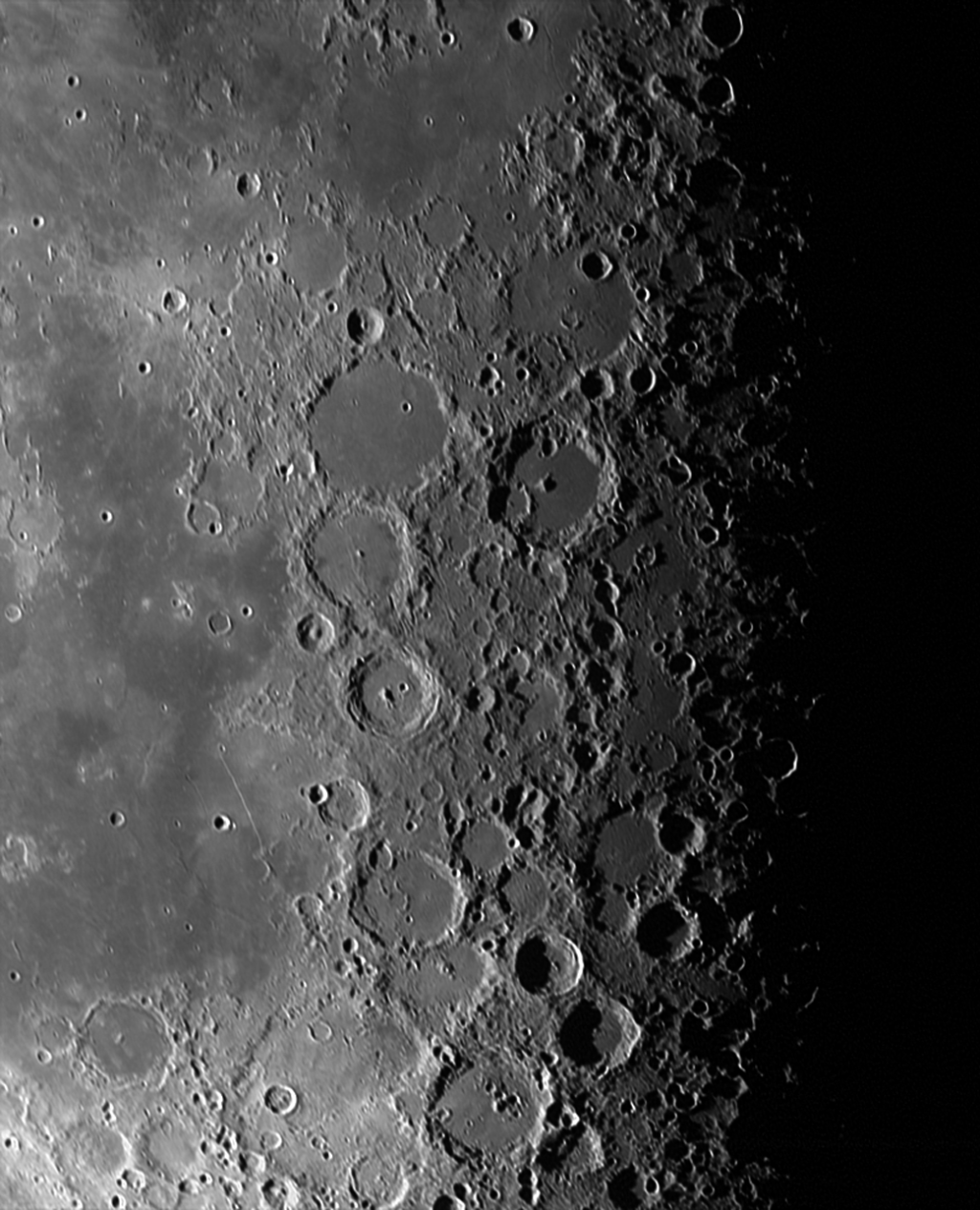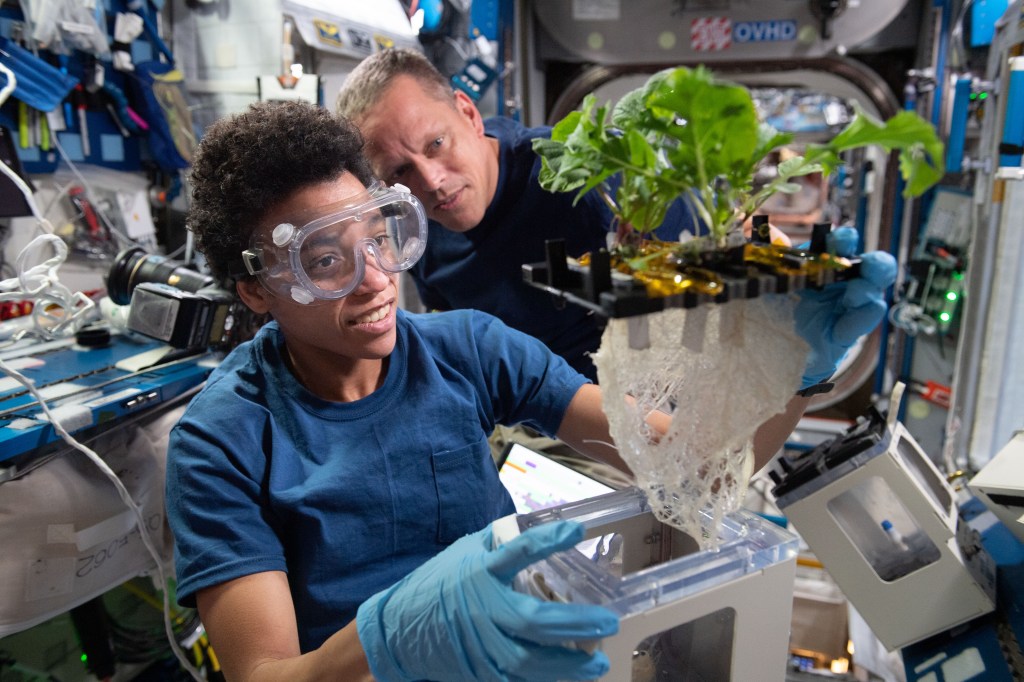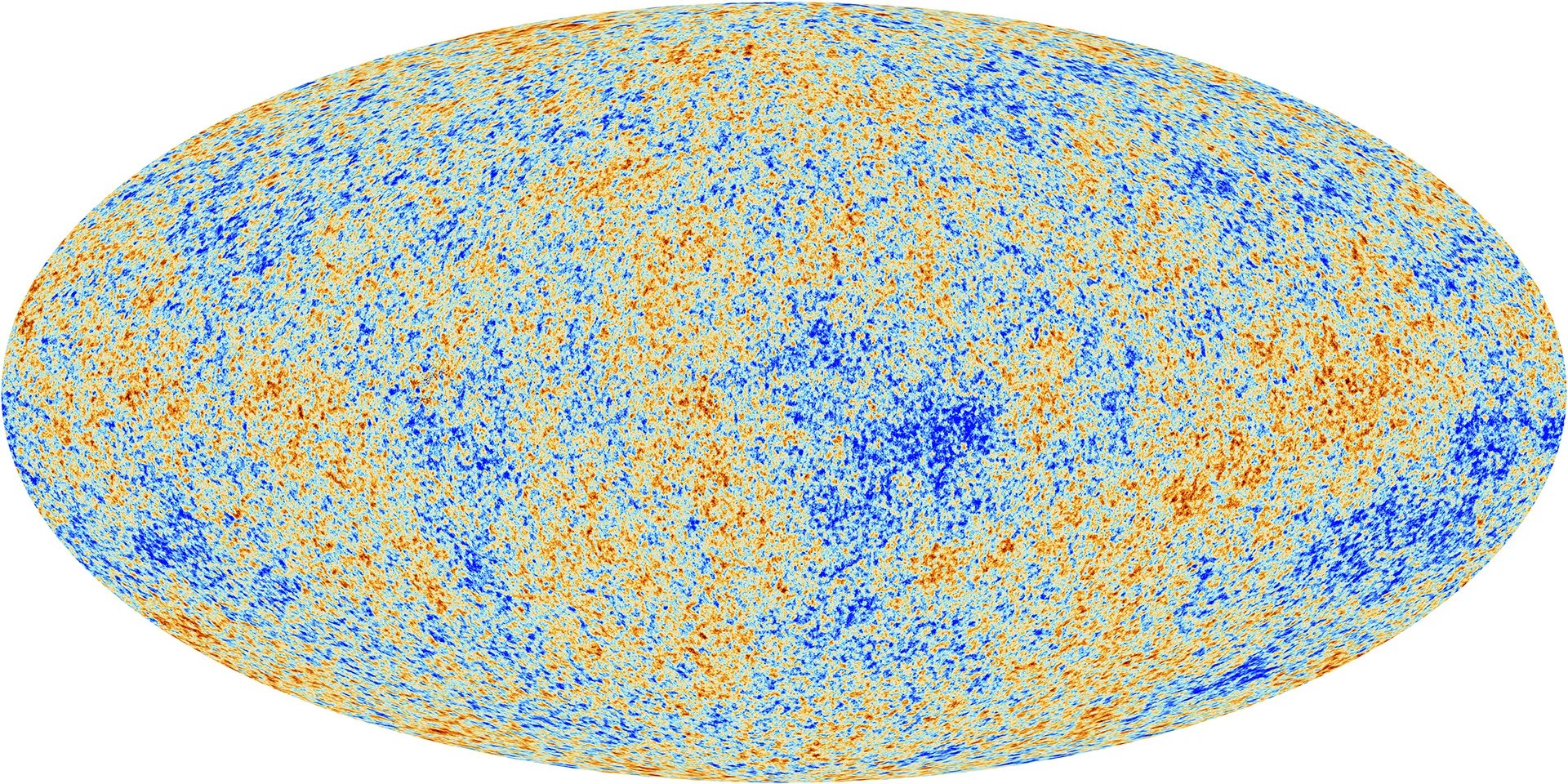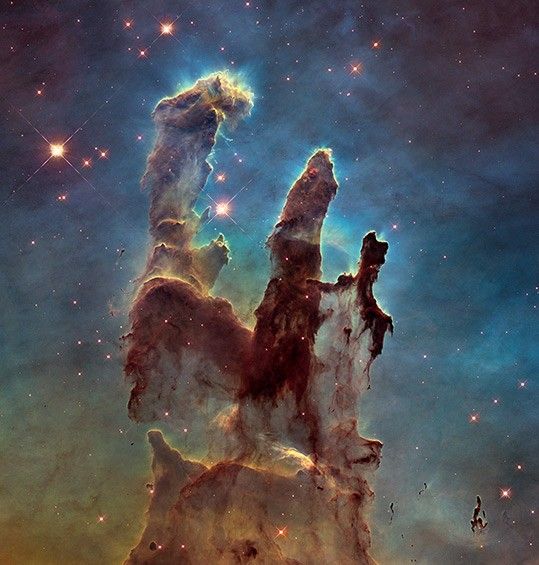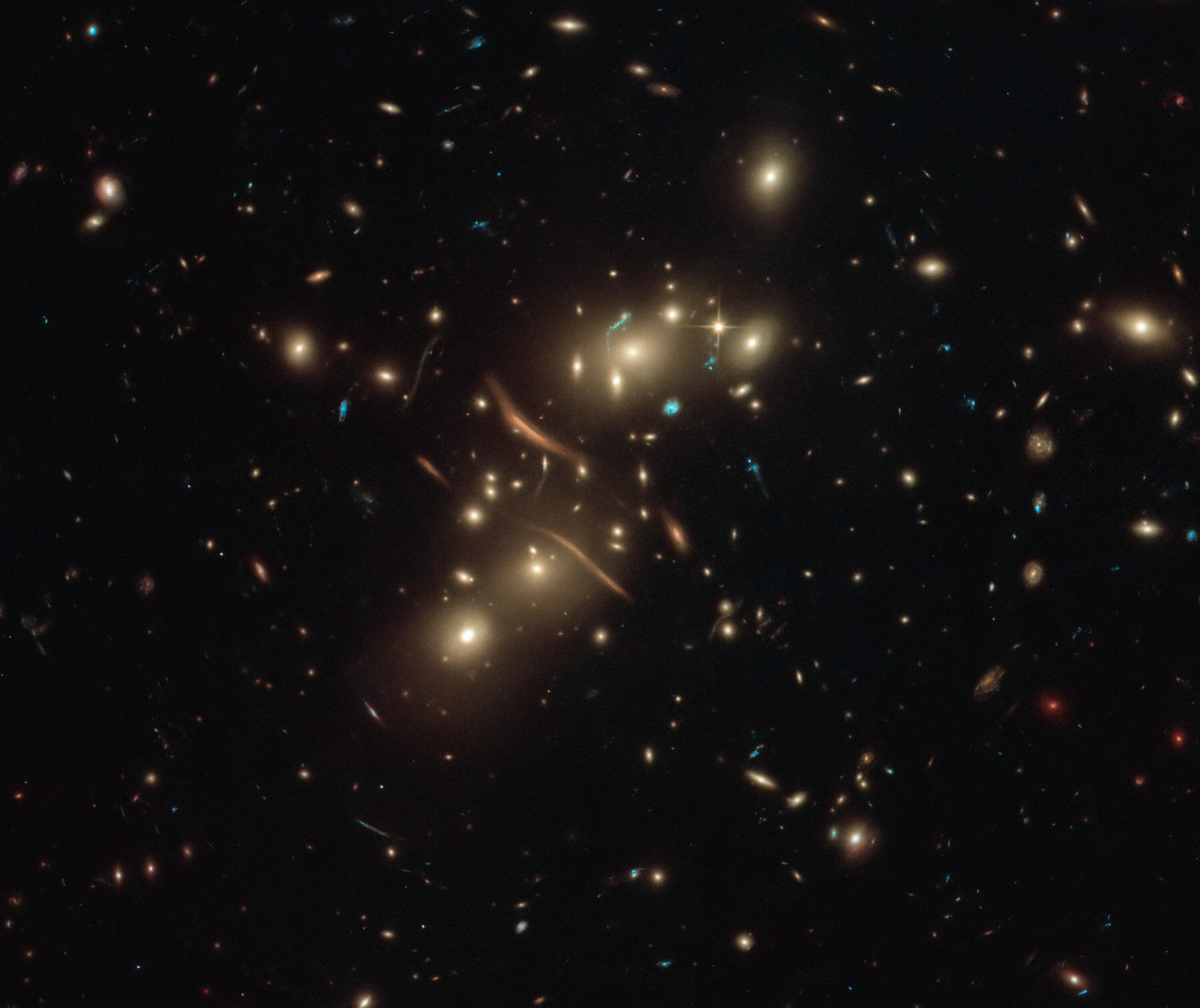Some 13.8 billion years ago, the universe was a dense, tremendously hot (too hot for the existence of atoms), extremely tiny point that rapidly surged outward in all directions. For a fraction of a second, the universe expanded faster than the speed of light. We do not know what triggered that initial, rapid expansion, but this period, called cosmic inflation, explains much of what we see in the universe today.
About one second after the big bang, the rapid expansion slowed. The universe was an extremely hot, uniform, cosmic soup of subatomic particles and light. As the universe continued to expand, its temperature and density decreased. A few minutes after the big bang, the universe had cooled enough for subatomic particles to form atomic nuclei. Protons and neutrons formed the nuclei of hydrogen and helium, the basic building blocks of stars, but it would be some 380,000 years before the universe cooled enough for these nuclei to capture electrons, forming the atoms we are familiar with today. As they became part of atoms, the captured electrons slowed down, releasing some of their energy that we detect as cosmic microwave background radiation today.
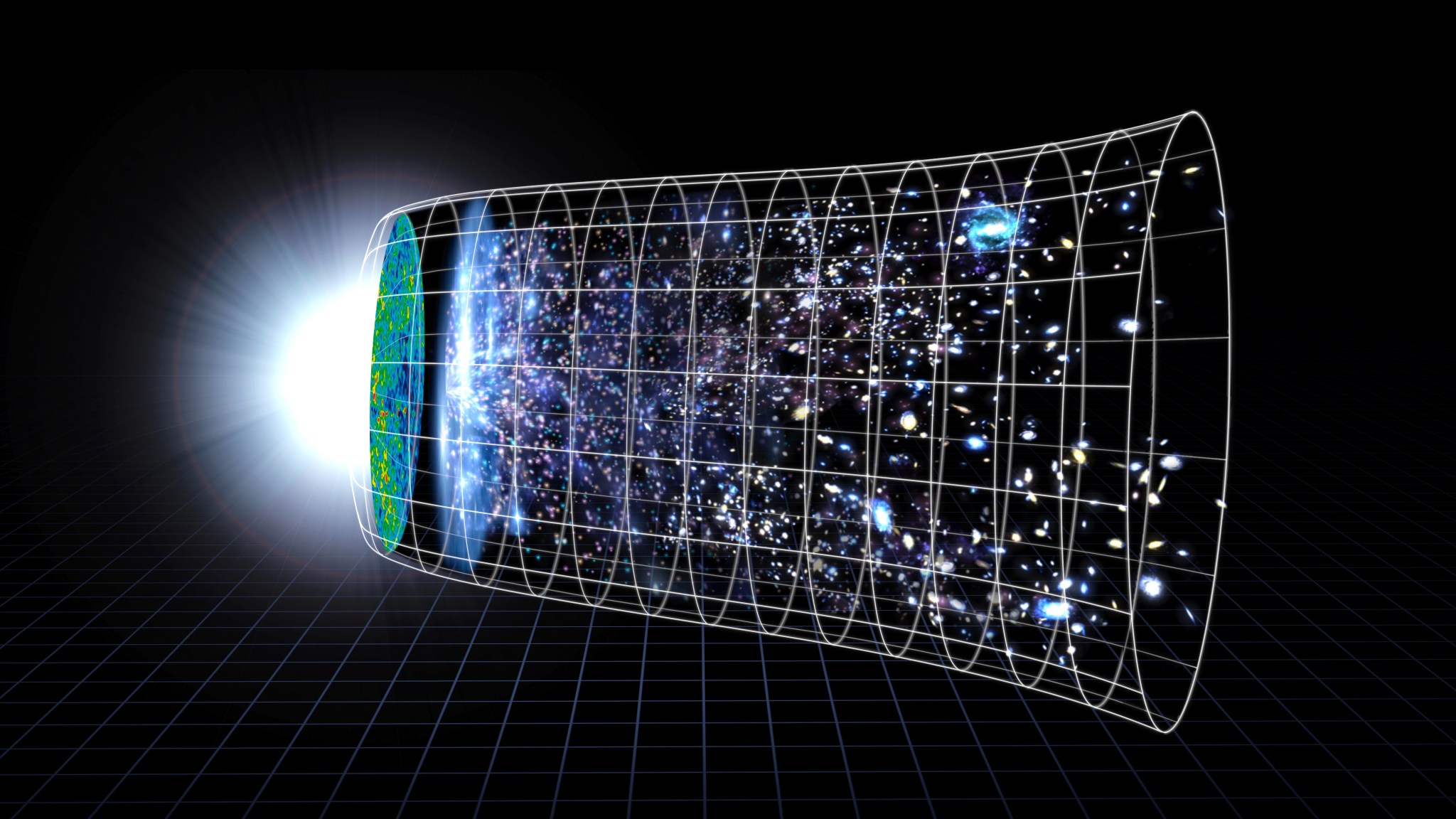
Continued cooling allowed atoms to clump up and form molecules. Eventually greater and greater clumps of matter formed the stars, planets, and galaxies so familiar to us today. The universe was no longer a smooth, uniform expanse of hot energy and light, but a lumpy expanse ruled by gravity. These gravitational lumps eventually formed a cosmic web of filaments and vast sheets of matter that shape the underlying structure of the universe we see today.
Hubble observations have given us a better understanding of the age of the universe with a much higher precision. Using gravitational lenses, Hubble observations have peered back in cosmic time to image some of the earliest galaxies. Hubble has even mapped sections of the cosmic web, and in a Nobel Prize winning discovery, it uncovered the acceleration of our expanding universe along with ground-based observatories. These discoveries have rewritten textbooks and changed our fundamental model of the universe.

























